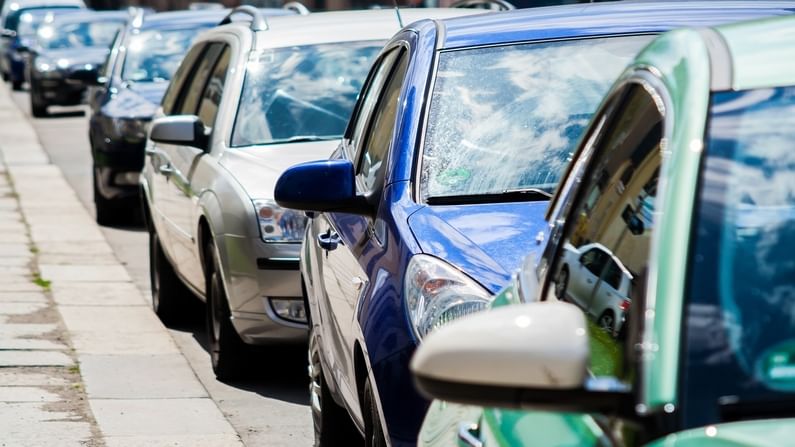Auto lease or buy: Let the numbers talk
- Kartik Malhotra
- Last Updated : January 23, 2021, 14:56 IST

Indians have bought upwards of 20 million vehicles in 2019-29. Almost 13% of these are cars.
So, if you are planning to buy your first car or looking at changing cars, bear in mind that most auto companies are also offering long term leasing options. It serves well to calculate your costs before deciding on leasing versus buying.
What is leasing?
Leasing a car is akin to renting a house. You do not rent a house for a day or a week but usually for at least a year or more. In the case of cars, leasing is a documented agreement that lets you ‘rent’ a car from the ‘owner’ (in this case the manufacturer) for a stipulated period.
As a lessee, you are only expected to pay the usage rental fee and fuel, of course (draw the analogy with electricity charges in a rented accommodation. You pay for them, don’t you?).
What you do not pay for is the insurance, wear and tear, servicing or any other capital expenses – just like the rented house.
In leasing a car, you practically ‘own’ a new car without real ownership and without the hassle of maintaining it. Just like the monthly rent to your landlord, here as well you pay a monthly fee to the lessor. No down payment.
Do the math
The devil lies in the details. In this case, the numbers.
Let us compare the option of buying vs leasing Maruti Suzuki’s popular Swift hatchback to drive home the numbers.
On Maruti Suzuki’s leasing website, the Swift LXi (Manual Transmission) is available for lease at Rs 16,063 per month for a minimum of 24 months, extendable to 48 months in tranches of 12 months for a white number plate (registration is temporarily on your name, not the company’s).
If you were buying a new car, chances are you will hold it for at least four years before selling it or upgrading, so let us take that number for our calculation. (use a calculator)
At Rs 16,063 a month, your cash outgo is Rs 7.7 lakh for four years. That looks like a steep rise from Rs 5.7 lakh for the same model’s on-road price in New Delhi. The delta is over Rs 2 lakh if you are paying the entire amount upfront. But if you were to consider a loan of Rs 5 lakh over a down payment of Rs 70,000, the interest for a four-year period at 9% amounts to Rs 97,000. This shrinks the lease vs buy difference to Rs 1.03 lakh from Rs 2 lakh.
Likely expenses to be incurred on a ‘purchased’ car
- At least one pair of tyres (depending upon your driving distance) over the four-year period @ Rs 6000
- Three cycles of insurance (the first one is accounted for in the on-road price) @ Rs 5000 per year approx. = Rs 15000
- Perhaps a battery change @ Rs 3,500
- Regular servicing @ Rs 7,000 per year = Rs 28,000
- Regular wear, tear, repair expenses over a 4-year period ~ Rs 10,000
That totals up to almost Rs 62,500 at a very basic, back-of-the-envelope calculation, level. The delta thins down from Ts 1.03 lakh (post interest) to around Rs 40,500.
Paying more or paying less?
In a four-year horizon, you are paying approx. Rs 40,500 more if you lease a car, versus buying it on EMI after accounting for interest on your loan and likely basic expenses. Moreover, by shelling out a smaller total amount, you continue to own your car after four years. It still has 11 years of life left (current ruling on petrol cars is 15 years of road life), plus you could always decide to sell it at prevailing second hand market rates and use that inflow as down payment for the next car.
Money9 Verdict
Buy a car with as much down payment as possible to reduce the interest component on your loan. If you are trapped for cash, explore the second hand car market for good deals. Lease a car only if you are in a certain geography for less than two years or are likely to upgrade to a better car soon. Use leasing option only as a stopgap arrangement before buying your own car and read all the terms and conditions very clearly to do your own math on expenses before buying. At present, a lot of four-wheeler manufacturers are coming up with leasing schemes. These include Maruti Suzuki, Hyundai and Skoda to name a few. Watch out for this evolving space, as rates get competitive when competition intensifies.
Download Money9 App for the latest updates on Personal Finance.
Related
- ट्रंप ऑटो टैरिफ से कार कंपनी तो नहीं लेकिन कंपोनेंट बनाने वालों को होगा ज्यादा नुकसान
- मारुति सुजुकी के बाद अब टाटा मोटर्स भी बढ़ा रहा पैसेंजर कार की कीमत
- निसान मोटर इंडिया की फरवरी में 44.76 प्रतिशत बढ़ी बिक्री, 8,567 यूनिट बिके
- जनवरी 2025 में कितने वाहन बिके, मारुति ने फिर किया कमाल
- पुरानी गाड़ियों पर कैसे लगेगा GST, वित्त मंत्रालय ने FAQ किया जारी
- पहले ही दिन 19 गुना सब्सक्राइब हुआ ये IPO, GMP दे रहा 70 फीसदी मुनाफे का संकेत

